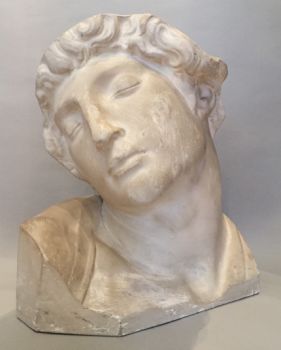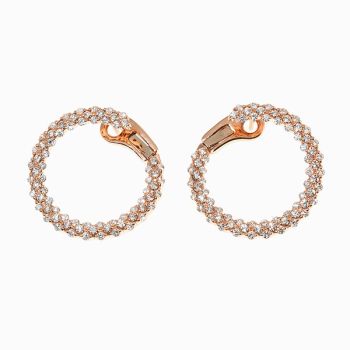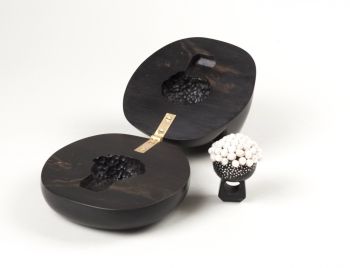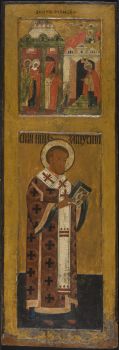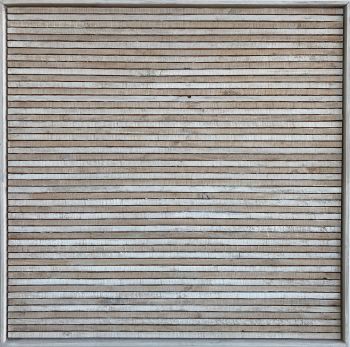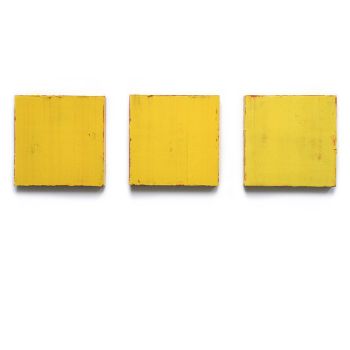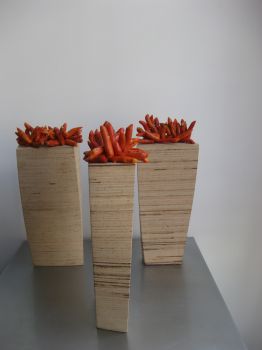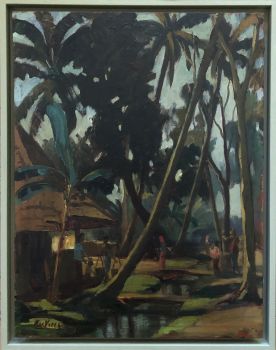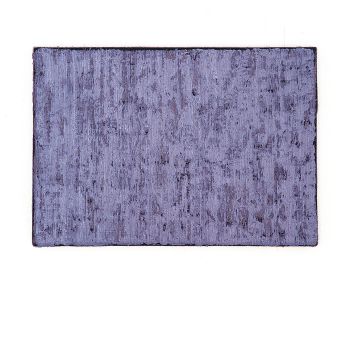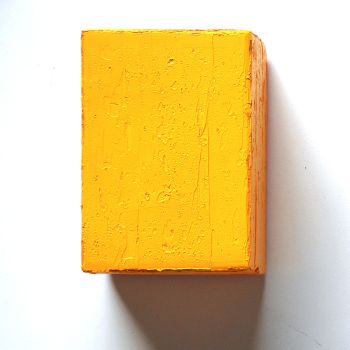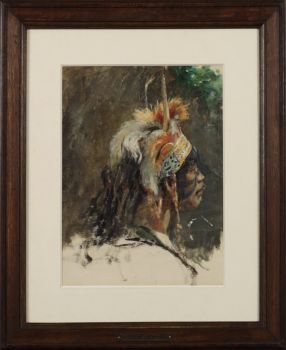An extraordinary pair of Indian ebony low chairs formerly owned by the Duke of Westminster Coromande 1680 - 1700
Unbekannter Künstler
EbenholzHolz
85 ⨯ 50 ⨯ 45 cm
Preis auf Anfrage
Zebregs & Röell - Fine Art - Antiques
- Über KunstwerkAn extraordinary pair of Indian ebony low chairs formerly owned by the Duke of Westminster
Coromandel coast, possibly Madras, 1680-1700
Both overall densely carved with an array of mermaids, birds, fish, mythological figures and floral and vine motifs, the back-rails are centered by a parrot (the attribute of Kama, the Hindu god of love) below a scallop shell (an attribute of Aphrodite/Venus) with a fleur-de-lis (a symbol of the Virgin Mary), the shell supported by two small human figures and a pair of mermaids, another Western element, but also a representation of the Hindu snake goddess Nagini, with crouching figures as finials, reminiscent of deity figures, with cane seatings.
H. 85 x W. 50.5 x D. 45 cm
Height of seat 41.5 cm
An identical chair is illustrated in Het Hollandsche Koloniale Barokmeubel, Dr. V. I. van de Wall, .1939, fig. 26. The Provenance of that chair is given as the Duke of Westminster, Eaton Hall, Chester. Before restoration the present pair had identical upholstered seats and the same casters as the chair of the Duke of Westminster. Therefore it seems safe to assume that the provenance of the present pair also is the Duke of Westminster, Eaton Hall in Chester. In the seat rails of the present chairs both are numbered II and III respectively, so they probably once belonged to a larger set in Eaton Hall.This type of chair usually turns up in England and seldom in Holland although they were also ordered by the Dutch on the Coromandel Coast of India. Possibly the Hindu motives of animals and humans in the carvings of these “Kust stoelen” were eventually not greatly appreciated in Muslin/Calvinist Java/Batavia. These high points in ebony furniture making were made by Hindu craftsmen in South India converted to Roman Catholicism by the Portuguese in the 16th and 17th centuries. These furniture makers, with their origins in the Hindu world, combined Hindu and Christian motives in a manner which was not seen again in furniture from India after the 17th century.
As in other known examples, the carving is in the round. The carvings on these two chairs bear close resemblance to the carving of the head- and foot-boards of the ebony rocking cradle in the Rijksmuseum Amsterdam (BK-1966-48, illustrated in: Asia in Amsterdam, 2015, cat. 26, p.108). - Über Künstler
Es kann vorkommen, dass ein Künstler oder Hersteller unbekannt ist.
Bei einigen Werken ist nicht zu bestimmen, von wem sie hergestellt wurden, oder sie wurden von (einer Gruppe von) Handwerkern hergestellt. Beispiele sind Statuen aus der Antike, Möbel, Spiegel oder Signaturen, die nicht klar oder lesbar sind, aber auch einige Werke sind überhaupt nicht signiert.
Außerdem finden Sie folgende Beschreibung:
•"Zugeschrieben …." Ihrer Meinung nach wohl zumindest teilweise ein Werk des Künstlers
•„Atelier von ….“ oder „Werkstatt von“ Ihrer Meinung nach eine Arbeit, die im Atelier oder in der Werkstatt des Künstlers, möglicherweise unter seiner Aufsicht, ausgeführt wurde
•„Kreis von ….“ Ihrer Meinung nach ein Werk aus der Zeit des Künstlers, das seinen Einfluss zeigt, eng mit dem Künstler verbunden, aber nicht unbedingt sein Schüler
•"Art von …." oder „Anhänger von ….“ Ihrer Meinung nach eine Arbeit, die im Stil des Künstlers ausgeführt wurde, aber nicht unbedingt von einem Schüler; kann zeitgenössisch oder fast zeitgenössisch sein
•„Art von ….“ Ihrer Meinung nach ein Werk im Stil des Künstlers, aber späteren Datums
•"Nach …." Ihrer Meinung nach eine Kopie (jegliches Datums) eines Werks des Künstlers
• „Unterzeichnet …“, „Datiert …“. oder „Beschriftet“ Ihrer Meinung nach wurde das Werk vom Künstler signiert/datiert/beschriftet. Das Hinzufügen eines Fragezeichens weist auf einen Zweifel hin
• „Mit Unterschrift …“, „Mit Datum …“, „Mit Aufschrift ….“ oder „Trägt Unterschrift/Datum/Beschriftung“ ihrer Meinung nach die Unterschrift/Datum/Beschriftung von jemand anderem als dem Künstler hinzugefügt wurde
Sind Sie daran interessiert, dieses Kunstwerk zu kaufen?
Artwork details
Related artworks
Artista Desconocido
Pair of 19th C French Taxidermy Dioramas1860 - 1890
Precio a consultarSpectandum Gallery
1 - 4 / 12Artista Desconocido
UN RARO TELESCOPIO DE CUERO LACADO JAPONÉS GRANDE1750 - 1800
Precio a consultarZebregs & Röell - Fine Art - Antiques
Artista Desconocido
A Dutch colonial Indonesian betel box with gold mounts1750 - 1800
Precio a consultarZebregs & Röell - Fine Art - Antiques
Artista Desconocido
The Stamford Raffles Secretaires.1800 - 1813
Precio a consultarZebregs & Röell - Fine Art - Antiques
1 - 4 / 24Joseph Savart
Four portraits of women of Guadeloupe1769
Precio a consultarZebregs & Röell - Fine Art - Antiques
1 - 1 / 1 curada por
curada porGallerease Magazine
1 - 4 / 24Artista Desconocido
PAREJA DE ANTORCHAS O VELAS DE TECA DORADA Y LACADA INDONESIA18th century
Precio a consultarZebregs & Röell - Fine Art - Antiques
Artista Desconocido
Japanese transition-style lacquer coffer 1640 - 1650
Precio a consultarZebregs & Röell - Fine Art - Antiques
Eduard Charlemont
‘Allegories of Africa and America’1872
Precio a consultarZebregs & Röell - Fine Art - Antiques
1 - 4 / 12










